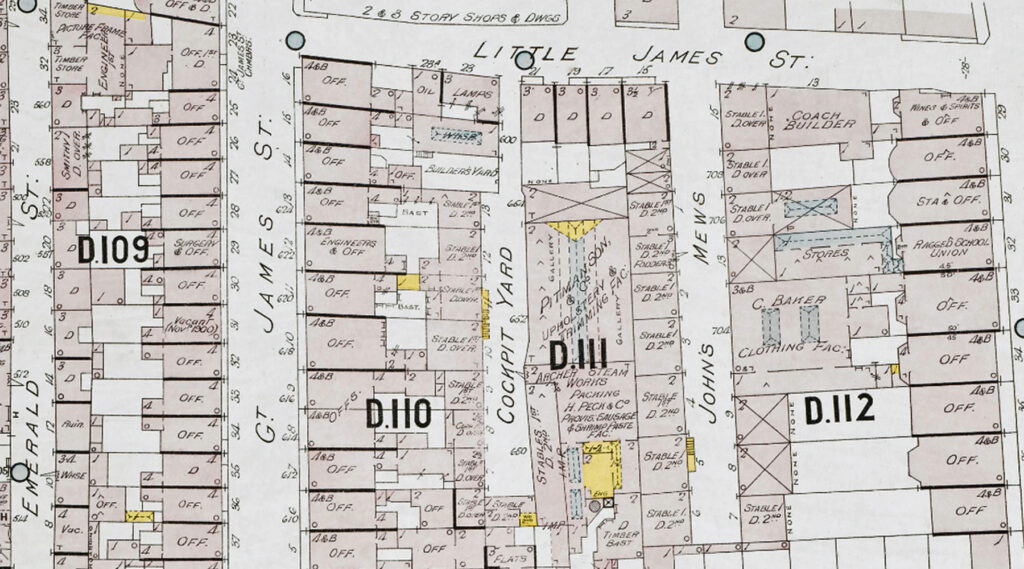This is a rough looking former stables mews that today is a mix of municipal yard and arts centre. The area though, originally developed from empty fields to the north of the Kings Way (now Theobalds Road) in the 1700s as part of the Doughty Estate, on lands owned by the Doughty and Tichborne families.
The name is almost certainly from an actual cockpit near the yard, which is mentioned in Pepys Diary in March and April 1668. It was described as a building with a pointed conical roof, and its structure was not unlike a theatre with seating around a central arena. It was said to have been one of the most frequented in the whole of London, attracting nobility from far and wide with people placing bets on the fighting birds in the pit.
As the area developed into housing though, the Cock Pit gave its name to two alleys.
One is the Cockpit Yard this article is about, but there’s also Cockpit Court to the south facing the other side of the block, and there’s a suggestion a narrow passage linked the two.
There’s also some ambiguity about the name, with some maps of the time calling it Cockpit Yard, and others Cock Pit Yard.
By the 1890s, Cock Pit Yard shows up on an OS map as a dead-end alley, with a large factory on the eastern side, and the western side still mainly stables mews for the grander houses the yard sat behind. According to Goads Insurance map of 1901, the factory was split between an upholstery firm and a sausage and shrimp paste maker — which must have made the fabrics next door smell a bit.
By the 1940s though, the factory is showing up in maps as a Council Depot, and since then, the long line of stables has been torn down and replaced by a service yard for the thing that replaces horses – the motor car. These days it’s a depot used by Veolia, who manage some of Camden Council’s services.
The factory building is still here and was taken over by Cockpit Arts, a space divided into studios offered to craftspeople and artists to use, so in a way, it’s still a factory for lots of different trades.
You can’t go past the gates into the yard, but you can see under the very worn tarmac the remains of a stone cobbled (sett) road, which happens to tell you this was a cheaply paved area, as stone was noisy to ride horse and cart over, and the main roads were paved with wood rather than stone.
At the far end of the alley is the back of Holborn Library, and there was a plan in 2015 to redevelop the 1960s library with a new building and a residential development at the back facing into the alley. However, that was paused in 2020.
But today, we have a courtyard that was always intended for the tradespeople to use, hidden away from the posh houses surrounding it, and unlike most other stables mews, it’s still supporting the working trades rather than being filled with expensive mews houses.











Leave a Reply